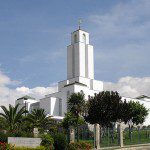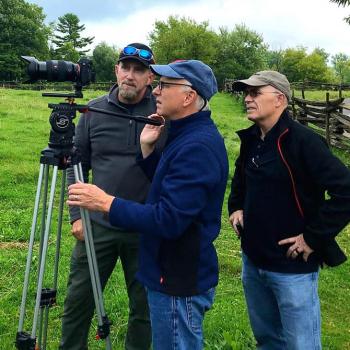
***
A new essay appeared at noon today, Utah time, in Interpreter: A Journal of Latter-day Saint Faith and Scholarship. I regret to say that I wrote it. I don’t regret my authorship of the essay because I disagree with anything that it contains, but because I don’t like the fact that this is the second Interpreter essay in a row by, well, me. I hadn’t intended to author this year’s Christmas message, which was published last week. But circumstances forced my hand. Anyway, here is this week’s offering:
“If God Does Not Exist, Is Everything Permitted?” by Daniel C. Peterson
Abstract: Can people be good without believing in God? Obviously, yes. They can. Is atheistic naturalism capable of supplying a foundation for morality? That is a separate question, to which more than a few theists have answered No. However, a relatively new book by a very prominent student of religion and society suggests otherwise. A rational morality can, it argues, be founded upon atheistic naturalism — but it will necessarily be a modest and quite limited one, lacking universal scope and without a belief in human rights as objective “moral facts.”
***
As has been my practice for a while, I now offer links to some articles from a prior issue of Interpreter. Perhaps you’ve forgotten them, or perhaps you missed them. Or perhaps you’ll want to take another look at one or more of them:
“Oh, That I Were an Angel!” by Daniel C. Peterson
Abstract: Alma’s conversion experience was both unusual and unusually powerful, and yet he fervently wished that he could provide others with the same experience. So much so, in fact, that he actually feared that he might be sinning in his wish by seeming to oppose the will of God. Increasingly, though, I find myself sharing that wish. My involvement with the Interpreter Foundation can correctly be regarded as one manifestation of that fact. I invite others to join us.
“Be Ye Therefore Loyal, Even as Your Father Which is in Heaven is Loyal,” by Taylor Halverson
Abstract: The scriptures are saturated with covenantal words and terms. Any serious or close reading of the scriptures that misses or ignores the covenantal words, phrases, and literary structure of scripture runs the risk of missing the full purpose of why God preserved the scriptures for us. This is especially true for the Old Testament and the Book of Mormon, which emerged out of an Old Testament cultural context. Research during the past century on ancient Near Eastern covenants has brought clarity to the covenantal meaning and context of a variety of words and literary structures in the Old Testament and the Book of Mormon. This article builds on that revealing research to show that the English word “perfect” in a covenantal context in scripture can also be represented with the covenantal synonyms of “loyal, loyalty, faithful, and trustworthy.” God has revealed and preserved the scriptures as records of these covenants and of the consequences of covenantal loyalty or disloyalty. The Lord’s injunction to “be ye therefore perfect” (Matthew 5:48) is beautifully magnified when we realize that we are not simply asked to be without sin, but, rather, to “be ye therefore covenantally loyal” even as God has been eternally and covenantally loyal to us.
“Ancient Sacred Vestments: Scriptural Symbols and Meanings,” by Donald W. Parry
Abstract: In this essay Parry starts with the symbology of ritual vestments, and then discusses in detail how the ancient clothing worn in Old Testament temples are part of the rituals and religious gestures that are conducted by those who occupy the path that leads from the profane to the sacred. The profane is removed, one is ritually washed, anointed, invested with special clothing, offers sacrifices, is ordained (hands are filled), and offers incense at the altar, before entering the veil. Putting on clothes, in a Christian context, is often seen as symbol of putting on Christ, as witnessed by the apostle Paul using the word “enduo,” when talking about putting on Christ, a word mainly used in the Septuagint for donning sacred vestments (symbols also for salvation, righteousness, glory, strength and resurrection) in order to be prepared to stand before God. Parry then goes on explaining how priestly officiants wearing sacred vestments, emulated celestial persons who wear sacred vestments, making one an image of those celestial persons. He concludes with showing how the ancient garbs of the High Priest point to Christ.
[Editor’s Note: Part of our book chapter reprint series, this article is reprinted here as a service to the LDS community. Original pagination and page numbers have necessarily changed, otherwise the reprint has the same content as the original.
See Donald W. Parry, “Ancient Sacred Vestments: Scriptural Symbols and Meanings,” in Temple Insights: Proceedings of the Interpreter Matthew B. Brown Memorial Conference, “The Temple on Mount Zion,” 22 September 2012, ed. William J. Hamblin and David Rolph Seely (Orem, UT: The Interpreter Foundation; Salt Lake City: Eborn Books, 2014), 219–40. Further information at https://interpreterfoundation.org/books/temple-insights/.]
“An Ishmael Buried Near Nahom,” by Neal Rappleye
Abstract: Latter-day Saint scholars generally agree that “the place called… Nahom,” where Ishmael was buried (1 Nephi 16:34) is identified as the Nihm tribal region in Yemen. Significantly, a funerary stela with the name y s1mʿʾl — the South Arabian equivalent of Ishmael — was found near the Nihm region and dated to ca. 6th century bc. Although it cannot be determined with certainty that this is the Ishmael from the Book of Mormon, circumstantial evidence suggests that such is a possibility worth considering.












